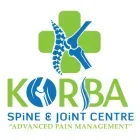Table of Contents

Introduction to Low Back Pain
Low Back Pain can feel like a persistent, unwelcome companion. Almost everyone experiences it at some point in life. It’s so common that it’s actually the leading cause of disability worldwide!
How common is low back pain? Did you know that nearly 80% of adults will deal with low back pain at least once? Yep, it’s that common. But just because it’s common doesn’t mean it’s simple.
Why is it so challenging to diagnose? The back is a complex structure. Pain can come from muscles, discs, nerves, joints, and yes — the vertebrae themselves. That’s what makes pinpointing the exact source tricky.
What is Vertebrogenic Low Back Pain?
Defining vertebrogenic pain Vertebrogenic low back pain is a distinct form of back discomfort that arises from the vertebral endplates — these are the top and bottom surfaces of your spinal bones where they connect with the cushioning discs. When these endplates are compromised or inflamed, they can trigger a unique sensation of pain.
Difference from other back pain causes Unlike discogenic pain (which arises from the discs) or facet joint pain, vertebrogenic pain is directly tied to the bones of the spine, specifically the vertebral body and endplates.
Anatomy of the Spine and Vertebral Endplates
Structure of the vertebrae Imagine your spine as a stack of blocks cushioned by jelly donuts (the discs). Each vertebra has an endplate at the top and bottom that connects to these discs.
Role of endplates in pain When these endplates wear out or get inflamed (due to age, injury, or degeneration), they can irritate nearby nerves and lead to chronic pain.
Causes of Vertebrogenic Pain
Degenerative changes The natural process of aging can lead to a weakening and breakdown of the endplates over time. Over time, small cracks or microfractures can form, leading to inflammation and pain.
Modic changes and their significance MRI scans often show Modic changes — specific signals in the vertebral bone marrow — which indicate inflammation and are strongly linked to vertebrogenic low back pain..
Symptoms of Vertebrogenic Low Back Pain
Typical pain patterns People usually describe it as a deep, aching pain in the center of the lower back, often made worse by sitting, bending forward, or lifting.
When to see a doctor? If your pain is severe, not improving with rest, or accompanied by numbness or weakness in your legs, it’s time to see a healthcare professional.
Diagnosis of Vertebrogenic Pain
Importance of patient history Your story matters! When did the pain start? What makes it better or worse? These clues help guide diagnosis.
If your doctor suspects vertebrogenic low back pain, an MRI scan is usually recommended.
Diagnostic nerve blocks Sometimes, doctors may use targeted nerve blocks to confirm if the vertebral endplates are truly the source of pain.
Non-Surgical Treatment Options
Physical therapy and exercise Staying active is crucial. Guided exercises strengthen supporting muscles and improve spinal mechanics.
Medications and pain management Anti-inflammatory medications, pain relievers, and sometimes muscle relaxants can help manage symptoms.
Lifestyle modifications Losing weight, improving posture, and avoiding prolonged sitting can work wonders for reducing back pain.
Interventional Treatments
Injections and nerve blocks Precisely administered injections can lessen inflammation and offer temporary relief, facilitating a patient’s participation in rehabilitation.
Intraosseous basivertebral nerve ablation (BVNA) is a minimally invasive procedure often used to treat vertebrogenic low back pain by targeting the basivertebral nerve inside the vertebra.
Surgical Options
When is surgery considered? Surgical intervention is typically reserved as a final course of action when less invasive treatments have proven ineffective and the pain significantly impacts one’s daily functioning.
Types of surgeries available Surgical options might include spinal fusion or other stabilizing procedures. However, newer nerve ablation techniques are reducing the need for major surgeries.
Living with Vertebrogenic Low Back Pain
Coping strategies Mindfulness, relaxation techniques, and support groups can help you mentally handle chronic pain.
Staying active and positive Movement keeps you strong and prevents stiffness. Plus, staying active boosts your mood and overall outlook!
Preventing Vertebrogenic Pain
Ergonomic tips Be mindful of your body mechanics when sitting, standing, and lifting. Ergonomic chairs, supportive mattresses, and proper lifting techniques can protect your spine.
Importance of spine health Regular exercise, core strengthening, and good posture habits go a long way in keeping back pain at bay.
Misconceptions and Myths
“All back pain is the same” Wrong! Back pain can have multiple sources, and vertebrogenic pain is just one unique type.
“Rest is always best” Extended periods of inactivity can actually aggravate back pain. Controlled, gradual activity is usually better.
Latest Research and Advances
Innovations in diagnosis New imaging techniques are helping doctors detect vertebrogenic pain more accurately and earlier.
New treatment techniques Minimally invasive procedures like basivertebral nerve ablation offer promising results and faster recovery times.
Conclusion
Vertebrogenic low back pain is a distinct, often misunderstood condition that originates from the vertebral endplates. Understanding its unique features is the first step towards effective relief. With advances in imaging and treatments, patients now have more targeted options than ever. Remember — staying active, being informed, and working closely with your doctor can make all the difference.
FAQs
What is the main cause of vertebrogenic pain? The primary cause is damage or inflammation of the vertebral endplates, often indicated by Modic changes on imaging.
Can this pain go away on its own? Mild cases might improve with conservative care, but chronic or more severe cases often require targeted treatments for lasting relief.
How is vertebrogenic pain different from disc pain? Vertebrogenic pain stems from the bone endplates, while disc pain originates from the intervertebral disc itself.
Is basivertebral nerve ablation safe? Yes, when performed by experienced specialists, it is considered a safe and effective minimally invasive treatment option.
Can exercise worsen vertebrogenic pain? No, not when done correctly. Guided exercises under professional supervision can be highly beneficial and help manage symptoms rather than exacerbate them.
With 20+ years of clinical experience in spine, joint, and pain management, Dr. Vivek ensures every article reflects accurate, trustworthy, and up-to-date health advice.
Learn more about Dr. Vivek’s qualifications & journey →

Dr. Vivek Arora (BPT, MPT, FRCPT, MIAP) is a licensed physiotherapist with over 20 years of experience in spine and joint care. He specializes in evidence-based physiotherapy, patient education, and long-term recovery without surgery. Passionate about empowering patients through knowledge, Dr. Arora shares expert-backed health content for a global audience.
To know more about Dr. Vivek’s journey, click here.
